When evaluating an industrial oil-fired boiler, the purchase price alone does not reflect its true economic impact. Many businesses make the mistake of focusing only on upfront costs, overlooking the substantial expenses that accumulate over a boiler’s operational life. A Lifecycle Cost Analysis (LCCA) provides a complete financial picture—helping decision-makers account for fuel usage, maintenance, downtime, energy losses, and environmental compliance costs to determine the boiler’s true value over time.
To perform a lifecycle cost analysis (LCCA) for an industrial oil-fired boiler, calculate the total cost of ownership over the system’s operational lifespan. This includes capital expenditure (CAPEX), installation, fuel costs, routine maintenance, spare parts, energy losses, emissions compliance, and end-of-life disposal or replacement. The analysis should be based on real performance data, usage patterns, fuel price trends, and maintenance schedules to estimate net present cost and return on investment (ROI).
Here’s how to structure your LCCA for strategic and cost-effective decision-making.
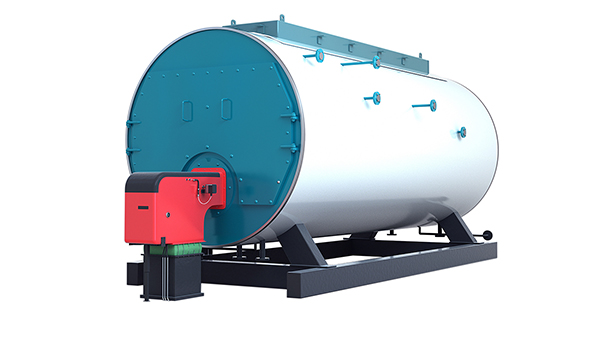
What Is Lifecycle Cost Analysis (LCCA) and Why Is It Critical for Boiler Selection?
Choosing the right boiler for an industrial operation—especially an oil-fired unit—is about more than comparing purchase prices. A boiler’s true financial impact unfolds over decades, not days. Unfortunately, many facilities base decisions primarily on initial capital cost, overlooking far larger downstream expenses such as fuel, maintenance, downtime, emissions compliance, and system replacements. Without a complete picture of the boiler’s lifecycle cost, companies risk selecting systems that appear affordable but ultimately drain budgets. That’s why Lifecycle Cost Analysis (LCCA) is a vital tool in informed boiler investment decisions.
Lifecycle Cost Analysis (LCCA) is a comprehensive financial evaluation method used to calculate the total cost of owning and operating a boiler over its useful life. It includes not only the upfront capital expenditure (CAPEX), but also all recurring operational expenses such as fuel, maintenance, labor, water treatment, emissions compliance, and eventual decommissioning. In industrial boiler selection, LCCA is critical because it reveals the true long-term financial burden of each boiler option, helping decision-makers choose the system that minimizes total cost—not just purchase price. For oil-fired boilers, where fuel costs dominate OPEX, LCCA often shows that higher-efficiency units offer superior ROI over time.
A boiler that’s cheaper to buy may be far more expensive to own—and LCCA exposes that reality.
Lifecycle cost analysis reveals long-term financial implications beyond upfront boiler purchase costs.True
It includes fuel use, maintenance, downtime, and emissions over the system’s operational life, guiding smarter investment decisions.
💰 Components of Lifecycle Cost Analysis
| Cost Category | Description |
|---|---|
| CAPEX | Initial purchase, installation, commissioning |
| Fuel Costs | Oil consumption over operational years |
| Maintenance | Routine, preventive, and corrective repairs |
| Labor Costs | Operators, technicians, inspection staff |
| Water Treatment | Chemicals and equipment to maintain steam purity |
| Emissions Compliance | CEMS, SO₂/NOₓ treatment, carbon taxes or permit costs |
| Downtime/Unplanned Repair | Production losses due to shutdowns |
| Decommissioning/Disposal | Removal and site restoration at end-of-life |
For oil-fired systems, fuel alone can account for over 70% of the total lifecycle cost.
📊 Typical Lifecycle Cost Distribution (20-Year Oil-Fired Boiler)
| Cost Component | % of Total Lifecycle Cost |
|---|---|
| Fuel | 65–75% |
| Maintenance & Repairs | 8–12% |
| Emissions & Compliance | 5–10% |
| Labor | 3–5% |
| Water Treatment | 1–3% |
| Decommissioning | 1–2% |
| Capital Cost | 6–10% |
An efficient 2% improvement in fuel use can save more money than the entire upfront price difference between two systems.
🧪 Example: 10 TPH Oil-Fired Boiler LCCA Comparison
| Parameter | Standard Unit | High-Efficiency Unit |
|---|---|---|
| CAPEX | $280,000 | $350,000 |
| Thermal Efficiency | 82% | 88% |
| Annual Fuel Use (tons) | ~2,650 | ~2,470 |
| Annual Fuel Cost (@$750/ton) | $1.99M | $1.85M |
| 20-Year Fuel Spend | $39.8M | $37.0M |
| Maintenance (20 years) | $680,000 | $600,000 |
| Total Lifecycle Cost | ~$41.6M | ~$39.7M |
Despite the higher purchase price, the efficient unit saves nearly $2 million over 20 years.
High-efficiency oil-fired boilers have lower total cost of ownership despite higher initial cost.True
Their reduced fuel consumption significantly outweighs the premium in capital cost over the lifecycle.
📋 Key Variables in LCCA Modeling
| Variable | Impact on LCCA Accuracy |
|---|---|
| Boiler Efficiency | Directly affects lifetime fuel cost |
| Operating Hours/Year | Higher use = faster ROI on efficiency |
| Fuel Price Volatility | Affects long-term cost predictability |
| Maintenance Intervals | Drives labor and spare parts cost |
| Run-Time Load Factor | Partial load decreases efficiency |
| Emission Charges | May increase total cost under regulation |
| Discount Rate | Used to calculate Net Present Value |
Sensitivity analysis should be included to evaluate different fuel cost and usage scenarios.
📈 Tools and Methodologies
| Tool/Method | Function |
|---|---|
| Net Present Value (NPV) | Accounts for time value of money |
| Internal Rate of Return (IRR) | Evaluates investment profitability |
| Levelized Cost of Steam (LCOS) | Cost per unit of energy produced |
| Excel-Based LCCA Templates | Commonly used for financial modeling |
| LCCA Software Platforms | Specialized tools with sensitivity toggles |
Combining financial tools with technical specs ensures decisions based on long-term returns—not short-term savings.
Summary
Lifecycle Cost Analysis (LCCA) is an indispensable financial tool for evaluating industrial boiler investments—especially oil-fired systems where operational costs often far outweigh initial capital. By calculating the total cost of ownership over 15–30 years, LCCA enables energy managers and engineers to make strategic, evidence-based decisions that optimize ROI, reduce fuel consumption, and manage regulatory risk. For industrial facilities aiming to control energy budgets and reduce carbon impact, LCCA isn’t just important—it’s essential to selecting the right boiler from day one.
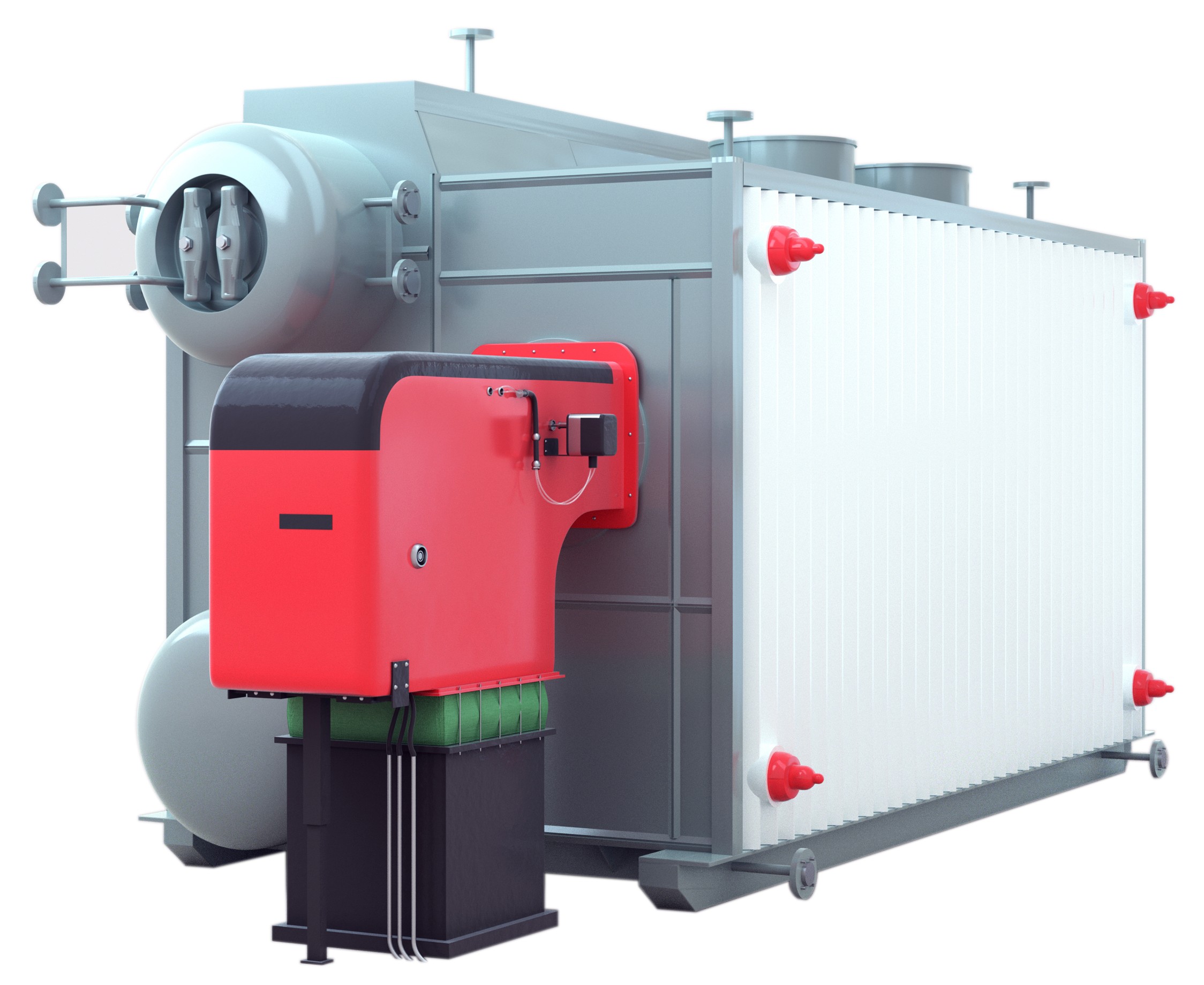
What Are the Key Cost Components Included in a Boiler Lifecycle Cost Analysis (LCCA)?
When selecting an industrial oil-fired boiler, many decision-makers focus narrowly on purchase price. But in reality, the initial capital expense is only a small fraction of what the boiler will cost over its lifespan. Fuel alone often accounts for more than 65% of the total cost. That’s why Lifecycle Cost Analysis (LCCA) is vital—it gives a full-spectrum view of all expenses over the boiler’s operational life, revealing the true financial impact of every choice made during system specification and procurement.
The key cost components included in a boiler lifecycle cost analysis (LCCA) are capital expenditures (CAPEX), fuel costs, maintenance and repair, emissions compliance, labor and operations, water treatment, downtime-related losses, and end-of-life decommissioning. Together, these components represent the total cost of ownership (TCO) of the boiler over 15 to 30 years. In industrial oil-fired boilers, fuel typically dominates the cost structure, followed by maintenance and emissions-related expenses. Accurate LCCA helps identify the boiler option that minimizes long-term operating costs—not just the one with the lowest initial price.
The lowest sticker price doesn’t always mean the lowest cost—and LCCA uncovers the full economic truth.
Boiler lifecycle cost analysis includes all expenses from acquisition to decommissioning, not just purchase price.True
This includes fuel, maintenance, compliance, labor, and downtime, which often outweigh initial capital costs.
📦 Full Breakdown of Boiler LCCA Components
| Cost Category | Description | Typical Share of Total Cost |
|---|---|---|
| 1. Capital Expenditure (CAPEX) | Purchase price, installation, commissioning | 5–10% |
| 2. Fuel Costs | Oil consumption over life span, tied to efficiency | 65–75% |
| 3. Maintenance & Repairs | Routine service, part replacement, inspections | 8–12% |
| 4. Emissions Compliance | SO₂/NOₓ control, monitoring (CEMS), permit fees | 3–8% |
| 5. Labor and Operations | Staff to operate and manage the boiler | 2–5% |
| 6. Water Treatment | Chemicals, softeners, RO systems, feedwater quality | 1–3% |
| 7. Downtime and Lost Output | Cost of outages, unplanned shutdowns | 2–6% |
| 8. Decommissioning/End-of-Life | Disposal, removal, site restoration | 1–2% |
Fuel efficiency is the biggest driver of lifecycle cost, and even 1–2% efficiency improvement can yield major savings.
📊 LCCA Example: 10 TPH Oil-Fired Boiler (20-Year Operation)
| Category | Estimated Cost (USD) | % of Total Cost |
|---|---|---|
| Capital Cost (installed) | $300,000 | 7.0% |
| Fuel (at 85% efficiency) | $37,500,000 | 74.5% |
| Maintenance & Repairs | $900,000 | 1.8% |
| Emissions Management | $450,000 | 4.5% |
| Labor & Operations | $650,000 | 1.3% |
| Water Treatment | $210,000 | 0.4% |
| Downtime Losses | $750,000 | 1.5% |
| Decommissioning | $140,000 | 0.3% |
| Total Lifecycle Cost | ~$50,900,000 | 100% |
Even modest changes in fuel price or efficiency have large-scale impact on the total cost over decades.
🧪 Real-World Scenario Comparison
| Parameter | Standard Efficiency (85%) | High-Efficiency Boiler (89%) |
|---|---|---|
| Fuel Cost/Year | ~$1.88 million | ~$1.79 million |
| Fuel Savings/Year | — | ~$90,000 |
| Fuel Savings (20 Years) | — | ~$1.8 million |
| Extra CAPEX (upgrade premium) | — | ~$60,000 |
| Net Lifecycle Savings | — | ~$1.74 million |
LCCA validates higher-efficiency choices as cost-effective long-term investments.
Even a small improvement in boiler efficiency (e.g., 3–4%) can lead to savings of over $1 million over 20 years.True
Fuel costs dominate lifecycle expenses, and efficiency gains compound over time.
📋 Factors That Influence Each Cost Category
| Factor | Affects These Cost Areas |
|---|---|
| Operating hours/year | Fuel, labor, maintenance |
| Fuel price volatility | Fuel, emissions |
| Load fluctuations | Efficiency, maintenance wear |
| Combustion tuning | Fuel, emissions |
| Water quality | Maintenance, water treatment |
| Boiler design (single vs. dual burner) | CAPEX, fuel efficiency |
| Automation level | Labor, maintenance |
Smart system design and automation can shift cost curves in favor of long-term value.
Summary
Lifecycle Cost Analysis (LCCA) for industrial oil-fired boilers accounts for every dollar spent from commissioning to decommissioning. The most impactful components—fuel, maintenance, emissions, and downtime—far exceed the initial capital cost. By understanding each of these cost drivers and how they interact with operational practices and system design, decision-makers can select boiler systems based on total economic value, not just sticker price. In a competitive industrial landscape, LCCA is the compass for long-term boiler profitability and sustainability.
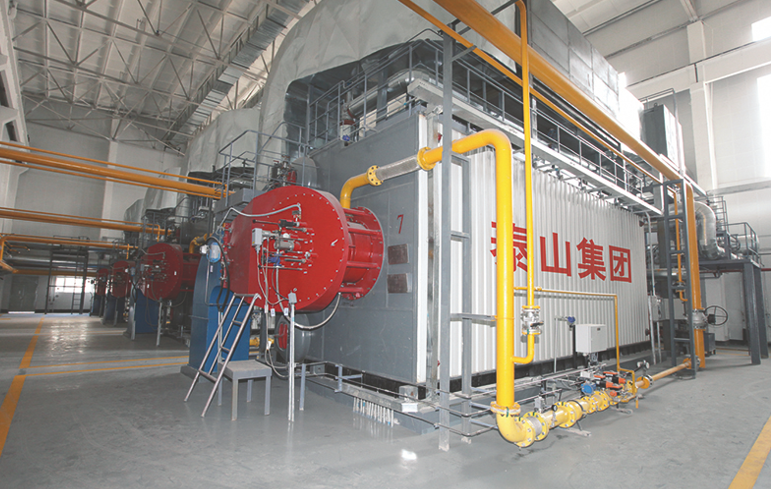
How Do You Estimate Fuel Consumption and Project Fuel Price Fluctuations for Industrial Boilers?
Fuel costs are the largest operating expense for oil-fired industrial boilers, often exceeding 70% of total lifecycle costs. As such, accurate fuel consumption estimation and intelligent fuel price forecasting are critical to long-term budgeting, boiler selection, and lifecycle cost analysis (LCCA). Without a precise understanding of how much fuel your boiler will use—and how its price may change—your financial projections can become unreliable and risky. This is why plant operators and engineers must develop data-driven models that estimate consumption based on boiler efficiency, load profile, and operational hours, while also projecting fuel costs using historical data, market indices, and risk buffers.
To estimate fuel consumption for industrial oil-fired boilers, calculate the boiler’s annual energy output in kilocalories or megawatt-hours based on expected run hours and load factor, then divide that energy requirement by the boiler’s thermal efficiency and the fuel’s calorific value. Fuel price fluctuations are projected using historical oil market trends, government energy forecasts, supplier contracts, and inflation-adjusted models. Accurate projections allow for smarter budgeting, procurement planning, and lifecycle cost modeling.
Without precise fuel estimates, operational budgets can quickly go up in smoke.
Fuel consumption and price forecasting are essential for accurate operating cost estimation in oil-fired boilers.True
Fuel costs dominate lifecycle costs, and even minor forecasting errors can lead to significant financial discrepancies.
🔍 Step 1: Estimate Annual Fuel Consumption
✅ Basic Fuel Consumption Formula:
Fuel Consumption (kg/year) = [Steam Output (kg/h) × Enthalpy (kcal/kg) × Hours/Year] ÷ [Fuel Calorific Value (kcal/kg) × Boiler Efficiency (%)]
| Example Input | Value |
|---|---|
| Steam Demand | 10,000 kg/h |
| Steam Enthalpy | 665 kcal/kg |
| Operating Hours per Year | 7,200 hours |
| Boiler Efficiency | 85% |
| Fuel Calorific Value (Diesel, HSD) | 10,200 kcal/kg |
Fuel Use = (10,000 × 665 × 7,200) ÷ (10,200 × 0.85) ≈ 5,465,359 kg/year ≈ 5,465 tons/year
Fuel cost = 5,465 tons × $800/ton = ~$4.37 million/year
📊 Fuel Consumption Sensitivity Table
| Boiler Efficiency (%) | Fuel Use (tons/year) | Annual Fuel Cost (@ $800/ton) |
|---|---|---|
| 82% | 5,666 | $4.53M |
| 85% | 5,465 | $4.37M |
| 88% | 5,278 | $4.22M |
| 90% | 5,168 | $4.13M |
Every 1% efficiency improvement reduces fuel cost by $40,000–$60,000/year.
📈 Step 2: Projecting Fuel Price Fluctuations
| Method | Description | Benefit |
|---|---|---|
| Historical Trend Analysis | Uses 5–10 years of diesel/oil market data | Reveals volatility patterns |
| Inflation Indexing | Adjusts prices by CPI or energy inflation | Predicts baseline rise |
| Energy Market Forecasts | EIA, IEA, OPEC, regional agency predictions | External macro-level insight |
| Supplier Contract Trends | Pricing trends from bulk supply contracts | Reflects real-world escalation |
| Hedging or Scenario Ranges | Create best-case, worst-case projections | Risk-managed planning |
📉 20-Year Diesel Price Projection Example
| Year | Price (USD/ton) | Notes |
|---|---|---|
| 2025 | $800 | Current baseline |
| 2026 | $840 | Inflation +5% |
| 2027 | $860 | Stable |
| 2030 | $950 | Policy-driven increase |
| 2035 | $1,100 | Carbon taxation escalates |
| 2045 | $1,300 | High-emissions premium |
If fuel costs escalate 3–5% annually, long-term contracts or hybrid fuel strategies can mitigate impact.
Projecting oil price increases at 3–5% per year provides a realistic risk buffer for long-term fuel budgeting.True
Oil prices are historically volatile, and building in escalation assumptions protects financial planning accuracy.
🧪 Case Study: Budgeting for Fuel Risk in Boiler Procurement
Scenario: 15 TPH Oil-Fired Boiler, 8,000 hours/year
Efficiency: 86%
Fuel use: ~8,050 tons/year
Diesel base price: $790/ton
Projected escalation: 4% annually
| Year | Fuel Cost (USD) |
|---|---|
| 2025 | $6.36M |
| 2030 | $7.74M |
| 2035 | $9.42M |
| 2045 | $13.93M |
| Total (20 years) | ~$150.6 million |
Fuel efficiency improvements or switching to hybrid fuels could save millions in lifecycle cost.
📋 Best Practices for Accurate Fuel Estimation
| Practice | Benefit |
|---|---|
| Use actual hourly steam data | Reflects true load variability |
| Account for seasonal fluctuations | More accurate annual projection |
| Adjust for boiler aging curve | Efficiency drops ~1% per 5 years if untreated |
| Review with procurement annually | Aligns projections with latest supplier terms |
| Combine with LCCA model | Enables full financial visibility |
Summary
Fuel consumption and price forecasting are foundational components of long-term boiler cost planning. For industrial oil-fired boilers, they define operating budgets, payback period accuracy, and lifecycle viability. By using engineering-based consumption formulas and market-aligned price modeling, plant operators can build robust, risk-adjusted cost projections that guide smart procurement and efficiency investments. In energy-intensive industries, those who master fuel modeling don’t just burn fuel more efficiently—they burn through fewer dollars doing it.
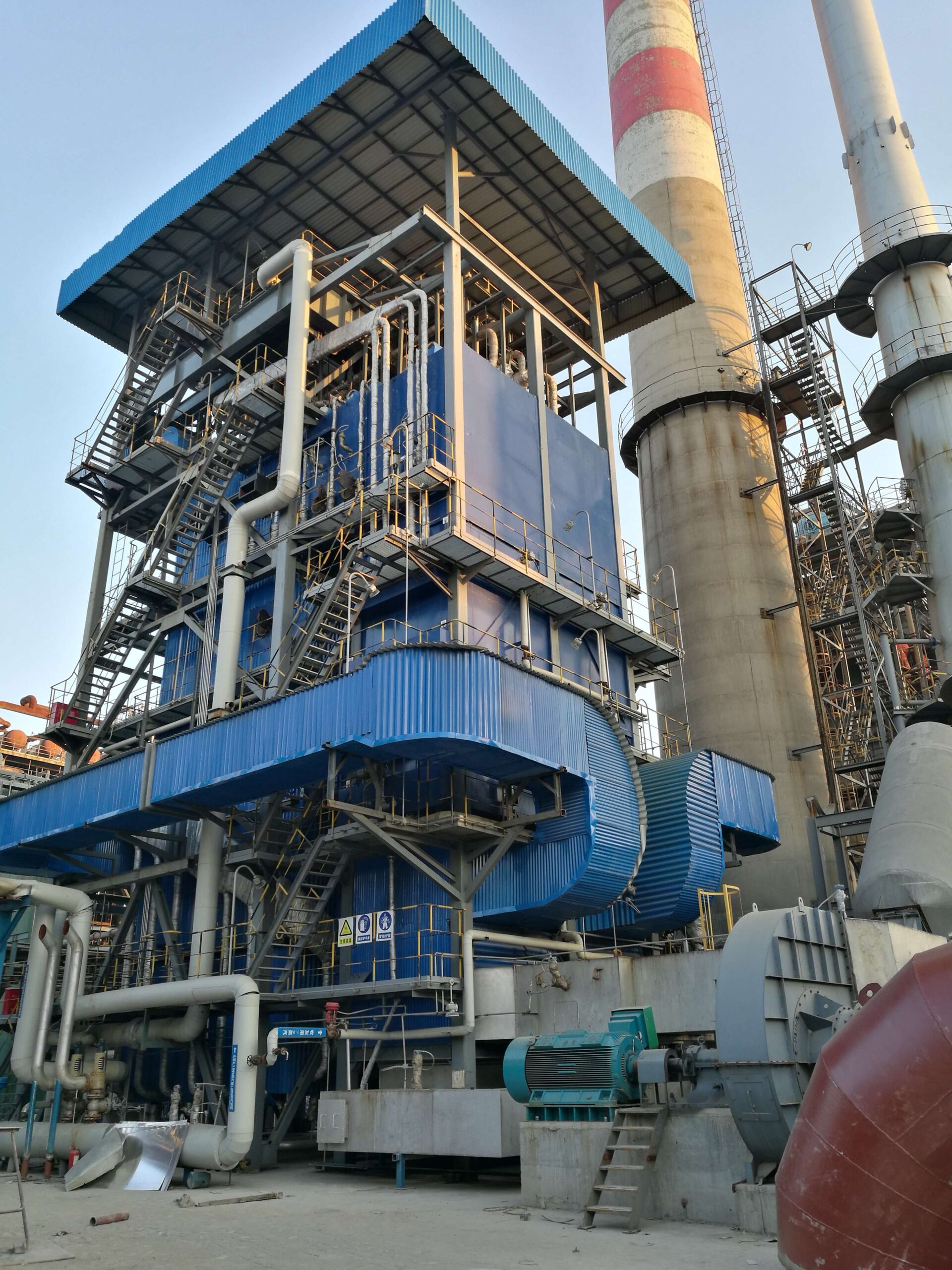
What Maintenance, Inspection, and Operational Costs Must Be Accounted for in Industrial Boiler Planning?
Owning and operating an industrial oil-fired boiler involves far more than just paying for fuel. Behind every ton of steam produced lies a network of ongoing costs—routine maintenance, system inspections, operational labor, and consumables—that keep the boiler reliable, safe, and compliant. While these costs may seem small compared to fuel expenses, they add up over time and directly influence downtime, efficiency, and system longevity. Ignoring or underbudgeting them can lead to surprise breakdowns, lost output, safety violations, or premature replacement. That’s why understanding and accounting for all relevant O&M (operation and maintenance) costs is essential to realistic lifecycle planning.
The maintenance, inspection, and operational costs that must be accounted for in industrial oil-fired boiler systems include routine service labor, spare parts, water treatment, inspection certifications, cleaning (soot, scale), burner tuning, emissions monitoring, control system calibration, lubricants, operator staffing, and consumables like chemicals and filters. These costs recur monthly, quarterly, or annually, and typically range from 3% to 10% of the boiler’s annual operating cost. Properly accounting for these ensures reduced unplanned downtime, stable combustion, and compliance with emissions and safety regulations.
A well-run boiler doesn’t just depend on fuel—it depends on how well it’s maintained and operated.
Ongoing maintenance, inspection, and operational costs are essential to include in total boiler lifecycle planning.True
These recurring expenses ensure reliability, safety, and efficiency and often exceed initial capital costs over time.
🔧 Key Maintenance Activities (Planned and Preventive)
| Activity | Frequency | Estimated Annual Cost (USD) |
|---|---|---|
| Burner inspection & tuning | Quarterly | $3,000 – $6,000 |
| Soot blowing and tube cleaning | Monthly to quarterly | $2,500 – $7,500 |
| Pump/fan motor lubrication | Monthly | $1,200 – $3,000 |
| Valve seal and gasket checks | Quarterly | $1,000 – $2,500 |
| Heat exchanger inspection | Biannually | $2,000 – $5,000 |
| Flue gas and O₂ sensor calibration | Quarterly | $1,500 – $4,000 |
| Water treatment system maintenance | Monthly | $2,000 – $5,000 |
| Electrical/control system check | Annually | $3,000 – $6,000 |
Total typical preventive maintenance cost: $15,000–$40,000/year for a mid-size industrial boiler.
🔍 Required Regulatory and Safety Inspections
| Inspection Type | Frequency | Estimated Cost (USD) |
|---|---|---|
| Boiler safety certification (ASME/API) | Annually | $2,500 – $6,000 |
| Pressure vessel/tube NDT testing | 1–2 years | $3,000 – $8,000 |
| Stack emissions testing | Annually or bi-annually | $2,000 – $4,500 |
| Control system compliance audit | Annually | $1,000 – $3,000 |
| Insurance/third-party inspections | Annually | $1,500 – $3,500 |
Missing required inspections can lead to penalties, permit loss, or boiler shutdowns.
👷♂️ Operational Staffing and Daily Costs
| Cost Element | Typical Requirement (Mid-Sized Boiler) | Estimated Annual Cost (USD) |
|---|---|---|
| Full-time boiler operator | 1–2 persons | $45,000 – $90,000 |
| Shift supervisors/engineers | Shared roles or per boiler block | $20,000 – $50,000 |
| Consumables (lubricants, filters, PPE) | Ongoing | $2,000 – $5,000 |
| Operator training & recertification | Every 2–3 years | $1,000 – $3,000 |
Skilled operators contribute to fuel savings and safety, reducing corrective repairs.
📊 Combined Maintenance + Operational Cost Estimate
| Boiler Size (Steam Output) | Annual O&M Estimate | % of Total Annual OPEX |
|---|---|---|
| 5 TPH | $20,000 – $35,000 | 3–6% |
| 10 TPH | $35,000 – $65,000 | 4–8% |
| 15 TPH | $60,000 – $100,000 | 5–10% |
| 30 TPH | $120,000 – $180,000 | 6–10% |
Larger plants see economies of scale per unit output, but absolute costs increase with complexity.
Properly budgeted O&M expenses help avoid surprise repairs, extend equipment life, and sustain efficiency.True
Neglecting routine tasks like burner cleaning or inspection leads to reduced performance and higher fuel and repair costs.
📋 Common Cost Drivers to Watch
| Factor | Affected Costs | Recommendation |
|---|---|---|
| Poor water quality | Increases scale/corrosion | Improve water treatment program |
| Infrequent burner tuning | Lowers combustion efficiency | Tune quarterly to save fuel |
| Irregular sensor calibration | Leads to AFR errors, drift | Calibrate quarterly |
| Outdated control system | Raises fuel and O&M cost | Upgrade DCS/PLC for better regulation |
| Deferred maintenance | Emergency shutdowns, fines | Implement predictive maintenance plan |
Managing these variables saves $50,000+ per year in a medium-sized facility.
Summary
Maintenance, inspection, and operational costs are foundational pillars of any industrial oil-fired boiler’s cost structure. From burner tuning to water chemistry checks, these activities ensure that the system runs efficiently, safely, and reliably. While they may appear minor compared to fuel costs, neglecting them leads to larger losses—both financial and mechanical. Accurate budgeting for these recurring costs is essential to any boiler lifecycle cost analysis (LCCA), ensuring performance is not just purchased—but preserved. In industrial boiler operation, what you maintain determines what you retain.
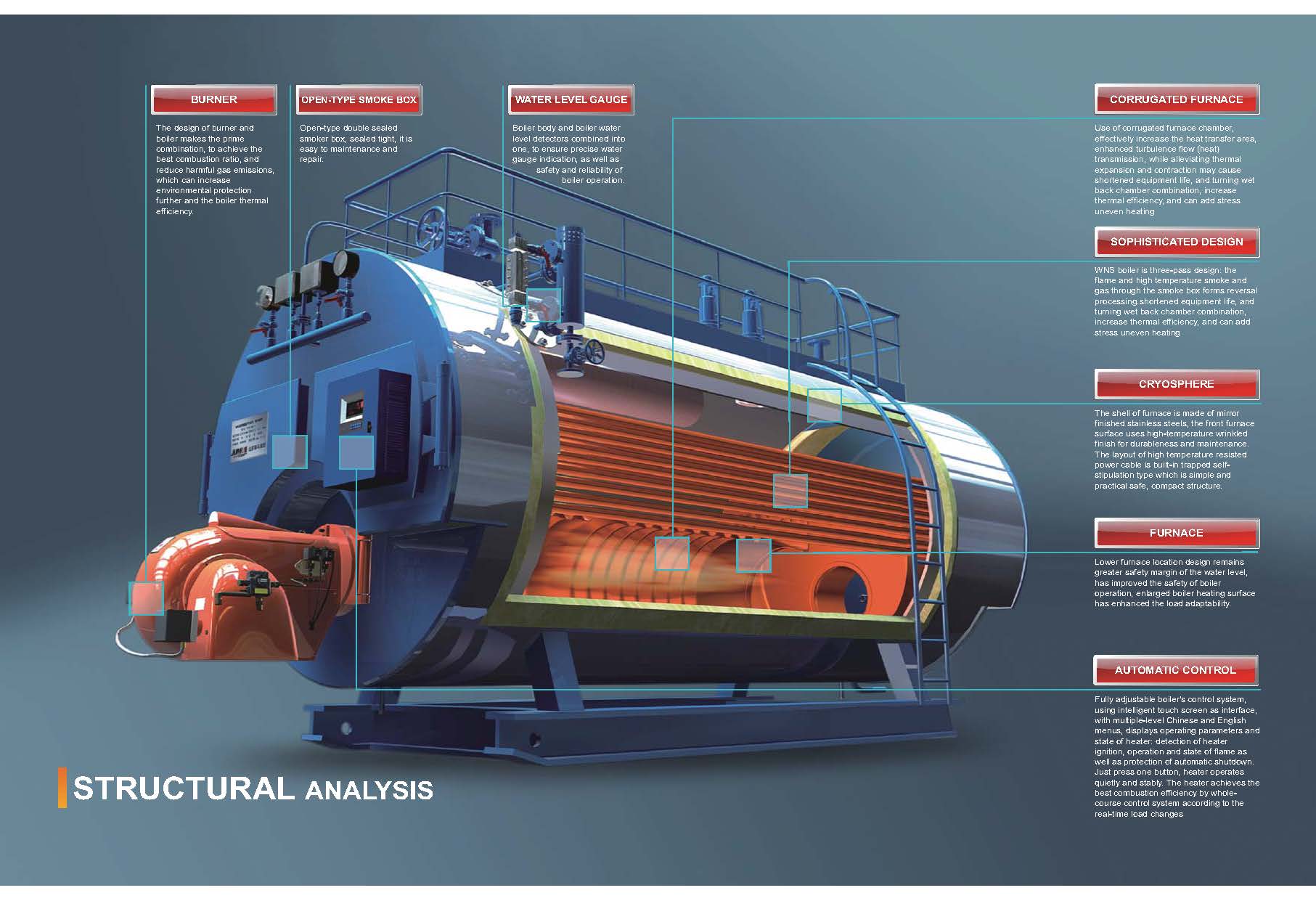
How Do You Calculate Present Value, Total Cost of Ownership, and Payback Period for Industrial Boiler Investments?
Choosing the right industrial oil-fired boiler isn’t just a matter of performance specs—it’s a long-term financial decision. To understand the full economic impact, plant owners and engineers must evaluate how much the system will cost to own and operate over time, and how quickly any added investment will pay off in savings. This is where financial tools like present value (PV), total cost of ownership (TCO), and payback period come in. These metrics help compare multiple boiler options based not only on their upfront cost, but on long-term cost-effectiveness, cash flow timing, and return on investment.
To evaluate industrial boiler investments, present value (PV) is calculated to determine the worth of future cash flows in today’s dollars, total cost of ownership (TCO) sums all expenses over the boiler’s life (including CAPEX, fuel, maintenance, and operations), and payback period identifies how many years it takes to recover the initial investment through fuel or operational savings. These tools help quantify long-term financial performance and ensure decisions are driven by lifecycle value—not just upfront pricing.
A smart boiler investment isn’t just affordable—it’s economically sustainable.
Net present value, total cost of ownership, and payback period are essential metrics in boiler investment decisions.True
They account for time value, operating costs, and return on investment, providing a comprehensive financial view.
📘 1. Total Cost of Ownership (TCO)
✅ TCO Formula:
TCO = CAPEX + ∑ (Annual OPEX + Compliance + Labor + Repairs + Decommissioning)
| TCO Component | Description |
|---|---|
| CAPEX | Purchase + installation cost |
| Fuel Costs | Dominant cost over 15–30 years |
| Maintenance & Repairs | Recurring annual cost, both preventive and corrective |
| Labor and Operations | Staff costs, training, safety certifications |
| Water Treatment | Chemical and equipment cost for steam purity |
| Compliance & Emissions | Permits, CEMS, penalties, taxes |
| Decommissioning | End-of-life removal, site cleanup |
Fuel cost alone can make up 65–75% of the TCO for an oil-fired boiler.
📉 2. Present Value (PV)
✅ Simplified PV Formula:
PV = FV / (1 + r)^n
FV = Future value of the cost/savings
r = Discount rate (e.g. inflation or interest rate)
n = Number of years in the future
✅ NPV (Net Present Value) for Boilers:
NPV = ∑ (Annual Savings / (1 + r)^n) – Initial Investment
| Example Inputs | Value |
|---|---|
| Annual Fuel Savings | $85,000 |
| Boiler Upgrade Cost | $120,000 |
| Discount Rate | 5% |
| Years | 10 |
NPV =
= $85K ÷ (1.05)^1 + $85K ÷ (1.05)^2 + … + $85K ÷ (1.05)^10
= ~$656,000 – $120,000 = $536,000 (Positive NPV = good investment)
⏳ 3. Payback Period
✅ Payback Period Formula:
Payback Period = Initial Investment / Annual Net Savings
| Example: | Value |
|---|---|
| High-efficiency boiler upgrade | $100,000 |
| Annual fuel savings | $25,000 |
| Payback Period | $100,000 / $25,000 = 4 years |
A shorter payback period means faster return and lower financial risk.
📊 Boiler Investment Comparison Table
| Boiler Model | CAPEX (USD) | Efficiency (%) | Annual Fuel Cost | 20-Year TCO | Payback Period |
|---|---|---|---|---|---|
| Standard Model | $250,000 | 83% | $2.2M | ~$46.5M | — |
| Efficient Model | $310,000 | 88% | $2.0M | ~$43.1M | ~3.5 years |
The higher-efficiency unit saves $175,000/year, paying back in under 4 years and saving over $3M in the long term.
📋 Best Practices for Financial Modeling
| Best Practice | Why It Matters |
|---|---|
| Use realistic operating hours | Reflects actual fuel and labor costs |
| Include maintenance inflation | Spare parts and service costs increase |
| Account for fuel price escalation | Protects long-term budget accuracy |
| Choose appropriate discount rate | 4–6% typical for industrial capex |
| Combine with risk scenario analysis | Plan for high/low fuel and demand cases |
Summary
Accurately calculating present value, total cost of ownership, and payback period is essential to making smart, financially sound decisions when selecting industrial oil-fired boilers. These tools allow buyers to look beyond purchase price and understand the true financial impact of fuel efficiency, maintenance costs, and operational longevity. By adopting lifecycle-focused analysis, companies ensure that their boiler investments deliver not just heat and steam—but measurable value for decades to come.
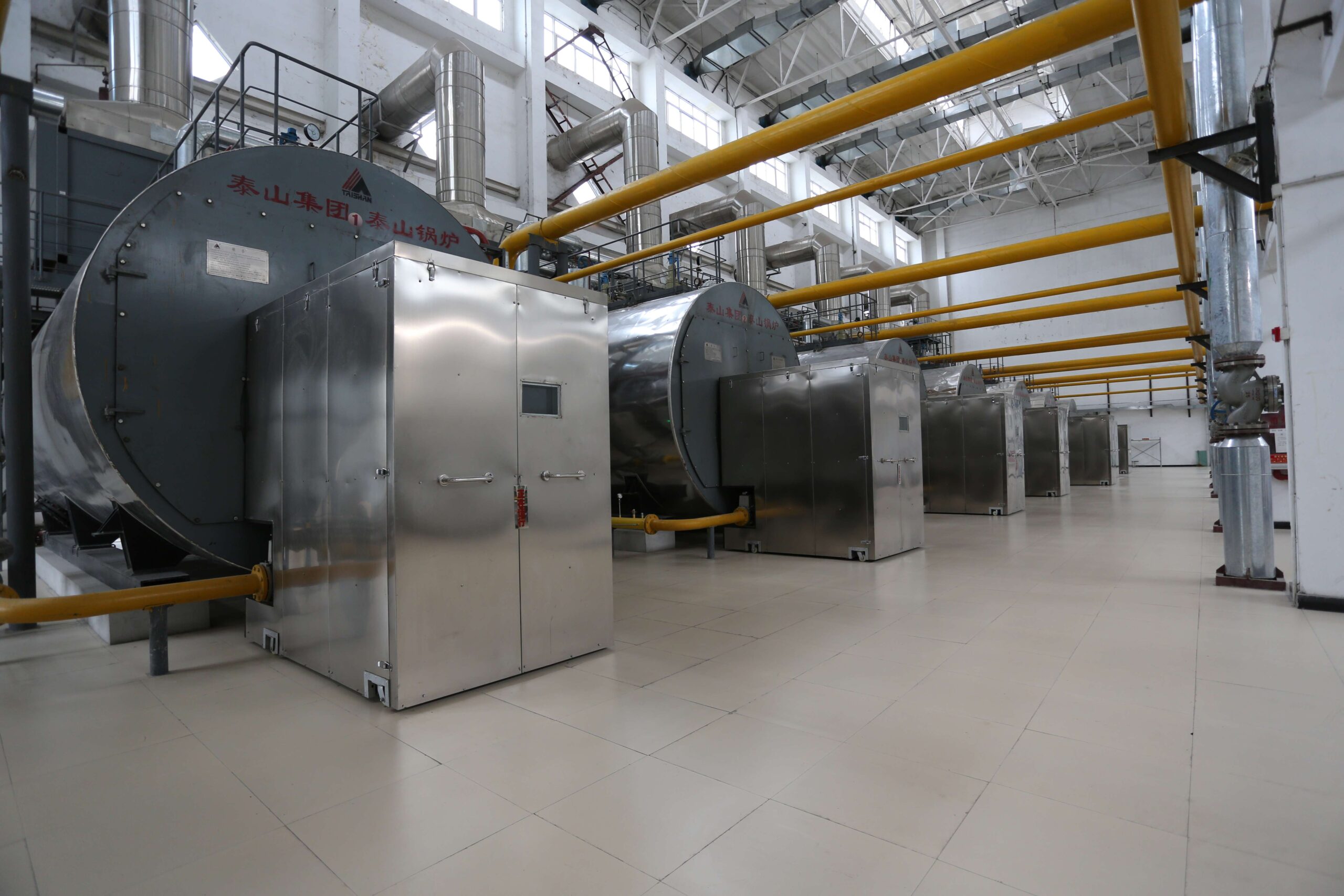
What Tools, Data, and Expert Support Are Needed for an Accurate LCCA?
Lifecycle Cost Analysis (LCCA) is one of the most powerful tools for making smart, strategic decisions about industrial boiler systems—especially oil-fired units, where fuel and operating costs dominate total expenditure. But to ensure that the analysis is accurate, realistic, and defensible, it must be grounded in real operational data, market intelligence, robust modeling tools, and input from cross-disciplinary experts. An incomplete LCCA risks misleading conclusions and poor investments. A well-supported one, on the other hand, becomes a compass for sustainable, cost-effective decisions.
An accurate lifecycle cost analysis (LCCA) for an industrial boiler requires specialized tools (such as Excel models or LCCA software), high-quality data inputs (including fuel prices, load profiles, efficiency ratings, and maintenance records), and expert support from engineers, financial analysts, and energy consultants. Together, these resources enable realistic cost forecasting, risk analysis, and performance comparisons over the boiler’s full lifespan. Proper LCCA integrates technical, operational, and financial perspectives to guide long-term decisions based on total cost—not just upfront price.
You can’t control what you don’t calculate—and you can’t calculate correctly without the right tools and minds.
Accurate boiler lifecycle cost analysis depends on reliable data, technical modeling tools, and multidisciplinary expert input.True
Realistic LCCA requires financial modeling, fuel forecasting, system performance assumptions, and compliance cost projections.
🧰 Essential Tools for LCCA Execution
| Tool Type | Purpose |
|---|---|
| Spreadsheet Models (Excel) | Custom TCO calculators with adjustable variables |
| LCCA Software (e.g. HOMER, RETScreen, E2Calc) | Pre-built templates with economic sensitivity toggles |
| Financial Analysis Tools | NPV, IRR, and payback period calculations |
| Fuel Consumption Calculators | Based on load, efficiency, and calorific value |
| Emission Cost Estimators | Models tax/penalty impact over time |
| Scenario Simulation Tools | Analyze low/high fuel price or load variation risks |
Custom Excel templates are often used in early-stage projects; software tools provide advanced capabilities for mature analysis.
📊 Required Data Inputs for Accurate LCCA
| Data Category | Specific Requirements |
|---|---|
| Boiler Specs | Thermal efficiency, rated output, design load |
| Operating Profile | Hours/year, average load %, turndown ratio |
| Fuel Characteristics | Calorific value, price/ton, projected escalation |
| Maintenance History | Typical cost/year, failure modes, service intervals |
| Water Treatment Costs | Chemical costs, filter replacement, consumables |
| Emissions Profile | NOₓ/SO₂ output, carbon footprint, compliance costs |
| Installation & Commissioning | Contractor, piping, permitting costs |
| Decommissioning Forecast | Site cleanup, boiler dismantling, salvage value |
The more site-specific and detailed the data, the more realistic and defendable the outcome.
👨🏫 Experts and Stakeholders Involved in LCCA
| Role | Contribution |
|---|---|
| Mechanical Engineer | Provides boiler performance metrics and failure modes |
| Energy Manager | Inputs on load profile, efficiency targets |
| Financial Analyst | Models NPV, IRR, risk-adjusted return |
| Procurement Manager | Validates vendor pricing and contract terms |
| Maintenance Supervisor | Inputs historical repair and servicing costs |
| Emissions/Compliance Expert | Estimates regulatory fees, permits, carbon taxes |
| OEM or Boiler Supplier | Confirms design specs, lifecycle assumptions |
| Third-party Consultant | Independent validation and benchmarking |
Cross-functional input ensures the LCCA accounts for technical performance, economic realism, and regulatory compliance.
📈 LCCA Process Workflow
| Step | Output |
|---|---|
| 1. Define Project Scope | Boiler size, lifespan, operating strategy |
| 2. Collect Technical & Cost Data | Inputs from OEM, energy records, utility bills |
| 3. Select Modeling Tool | Excel, RETScreen, or other economic platform |
| 4. Run TCO & Payback Simulations | Compare multiple boiler scenarios |
| 5. Apply Discount Rate & Risk Factor | Establish present value of future costs |
| 6. Review with Stakeholders | Validation by engineers, managers, finance team |
| 7. Refine & Document | Deliver a final LCCA report for procurement stage |
A well-executed LCCA often influences capital allocation, fuel contract negotiations, and technology selection.
🧪 Case Study: LCCA in 10 TPH Boiler Selection
Goal: Choose between standard and high-efficiency oil-fired boilers
| Attribute | Standard Unit | High-Efficiency Unit |
|---|---|---|
| Efficiency | 84% | 89% |
| CAPEX | $250,000 | $310,000 |
| Fuel Price (Diesel) | $800/ton | Same |
| Fuel Consumption (20 yrs) | 50,000 tons | 47,000 tons |
| Fuel Cost (20 yrs) | $40M | $37.6M |
| Maintenance (20 yrs) | $900,000 | $850,000 |
| TCO | $41.15M | $38.76M |
| Payback | — | ~3.4 years |
| NPV (5% rate) | — | ~$1.5M advantage |
LCCA tools helped justify higher CAPEX in exchange for long-term operating savings and faster ROI.
Summary
Accurate lifecycle cost analysis (LCCA) is a multi-dimensional task that requires the right combination of financial modeling tools, reliable operational data, and technical expertise. Without these elements, LCCA results can misrepresent true costs, leading to poor boiler selection and budget overruns. With them, energy managers can make evidence-based decisions that align performance, reliability, and financial return. In high-capacity oil-fired boiler investments, precision planning isn’t optional—it’s the difference between profit and regret.
🔍 Conclusion
Performing a Lifecycle Cost Analysis for an industrial oil-fired boiler helps you look beyond the purchase price and understand the true cost of operation over 15–25 years. Factoring in fuel efficiency, maintenance requirements, and future compliance costs ensures that your investment delivers maximum value, long-term savings, and operational reliability. A well-conducted LCCA empowers you to make informed, future-proof procurement decisions.
📞 Contact Us
💡 Need help conducting a lifecycle cost analysis for your boiler project? Our experts provide customized LCCA reports, fuel efficiency modeling, and ROI forecasting for industrial oil-fired boiler systems.
🔹 Let us help you make smart, data-driven decisions for your boiler investment. 🛢️📊💼
FAQ
What is lifecycle cost analysis (LCCA) in the context of oil-fired boilers?
Lifecycle cost analysis is the process of calculating the total cost of ownership (TCO) of a boiler over its expected lifespan. It includes not just the upfront capital cost, but also fuel expenses, maintenance, repairs, compliance costs, and end-of-life disposal or replacement.
What are the key components of a lifecycle cost analysis for an oil-fired boiler?
Capital Cost – Purchase and installation costs
Fuel Costs – Based on efficiency and consumption rates over time
Operating & Maintenance (O&M) Costs – Annual service, inspections, parts
Emissions Compliance Costs – NOx/SOx controls, monitoring equipment
Downtime & Replacement Costs – Unplanned outages and system lifespan
Residual Value – Salvage or resale value at end of life (optional)
How is fuel cost calculated in lifecycle analysis?
Calculate:
Annual Fuel Cost = (Fuel Consumption per Hour × Operating Hours × Fuel Price)
Then, multiply this by the number of years the boiler is expected to operate (e.g., 20 years), adjusting for efficiency degradation and fuel price inflation if needed.
What is the typical lifespan of an industrial oil-fired boiler for LCCA?
Most oil-fired boilers have an expected operational life of 20–25 years with proper maintenance. The lifecycle cost analysis should span this duration, factoring in performance decay, rising fuel costs, and increasing maintenance in later years.
Why is lifecycle cost analysis important for boiler selection?
LCCA enables decision-makers to go beyond upfront cost and consider long-term financial implications, ensuring better investment value. It helps compare oil-fired systems with gas, coal, or biomass alternatives, especially when considering fuel volatility and regulatory risks.
References
Lifecycle Costing for Energy Systems – https://www.energy.gov
Oil-Fired Boiler Cost Estimation Methods – https://www.researchgate.net
ASME Guidelines on Boiler Efficiency and Lifespan – https://www.asme.org
Boiler Total Cost of Ownership Calculator – https://www.iea.org
Fuel Price Trends and Forecasts – https://www.eia.gov
Operation & Maintenance Cost Analysis – https://www.sciencedirect.com
Emission Compliance and Monitoring Costs – https://www.epa.gov
Industrial Boiler Performance Degradation Study – https://www.mdpi.com
Financial Modeling for Thermal Systems – https://www.energysavingtrust.org.uk
Oil Boiler Replacement and Disposal Planning – https://www.bioenergyconsult.com

